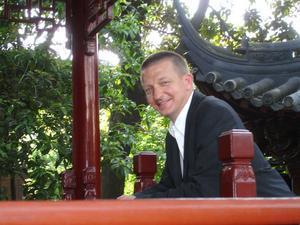A few years ago, the job title leader of foresight and innovation might have sounded far-fetched. Not today. Andy Pearson talks to Arup’s Chris Luebkeman. In association with Ferroli
What will a shopping experience be like 10 years from now? What will the hotel room of the future contain? What services will libraries be offering lenders come 2020? Chris Luebkeman is the man who can tell you.
As leader of consultant Arup’s global “foresight and innovation” initiative – and in fact its mastermind – it is his job to find the answers to these and other questions on what our world will be like in five, 10 or 20 years’ time. “I help Arup and its clients frame their thinking about the future,” says the 44-year old professor.
Luebkeman is currently working with companies such as Waitrose and J Sainsbury. “I don’t have a crystal ball and I’m not a fortune teller; I’m a trend expert,” he patiently explains in his soft American accent with just a hint of his native Swiss still discernable. He is anxious to make clear that trend spotting is not guesswork but a scientific process honed at workshops where he is able to draw on the expertise of a pool of assembled specialists.
For the built environment, Luebkeman says change will come through a series of what he terms key drivers. The two key factors that will underlie future change are an aging population and the wealth gap between rich and poor. In addition he lists a host of other reasons for change, including environmental issues such as resource depletion, technological drivers such as the convergence of communication and business technologies, and economic changes such as the rise of China. Finally, he says, there are the political drivers, which Luebkeman describes as a lack of a vision and a difficulty in getting politicians to think beyond the next election. He says that all of these stimuli are so significant that he has commissioned people at Arup to “dig the facts” on each.
I don’t have a crystal ball and I’m not a fortune teller; I’m a trend expert
Luebkeman’s work takes him far beyond the walls of Arup, however. “I keep in touch with all of those who are impacting our lives through their official futures,” he says somewhat esoterically. He says that every single company, producer of consumer goods, government and corporation has a vision of the future, what he describes as their “official future”. In exchange for their prediction he says Arup will be able to help them become more aware of their impact in the future on the built environment.
The future has been Luebkeman’s obsession for many years. In 1998, while a professor at Massachusetts Institute of Technology, he set up the house of the future project – a scheme to utilise technologies to enable homes to adapt to their occupants’ needs. He admits that such a home has yet to be built but insists that interactivity in homes is increasing, albeit slowly. “Change will probably come as a result of oil price increases,” he says. Innovations that help to save resources, and money, such as interactivity, will therefore become more desirable. “The technologies are all available now, it is just the drivers for change are not yet in place.”
Understanding what the world will be like in the future is an exhausting business: after all, there is a lot of world and a lot of future to cover. “I do a heck of a lot of travelling, probably way too much,” sighs Luebkeman. All of which means that the interactive home of the future is not a place in which he will be spending much time.
Source
�ǿմ�ý Sustainable Design


















No comments yet